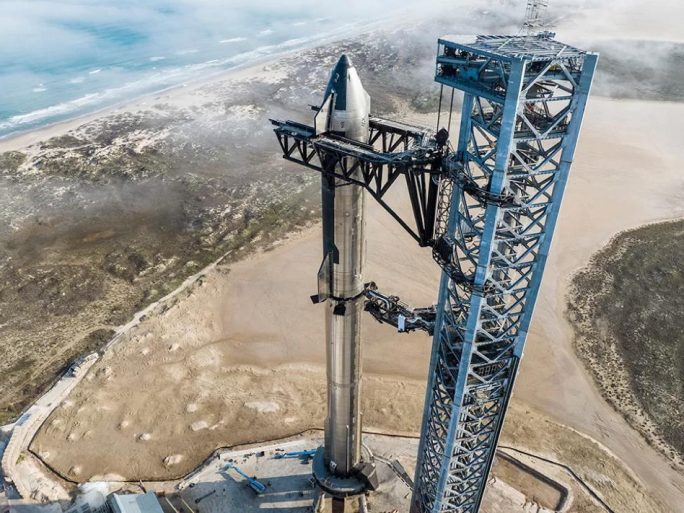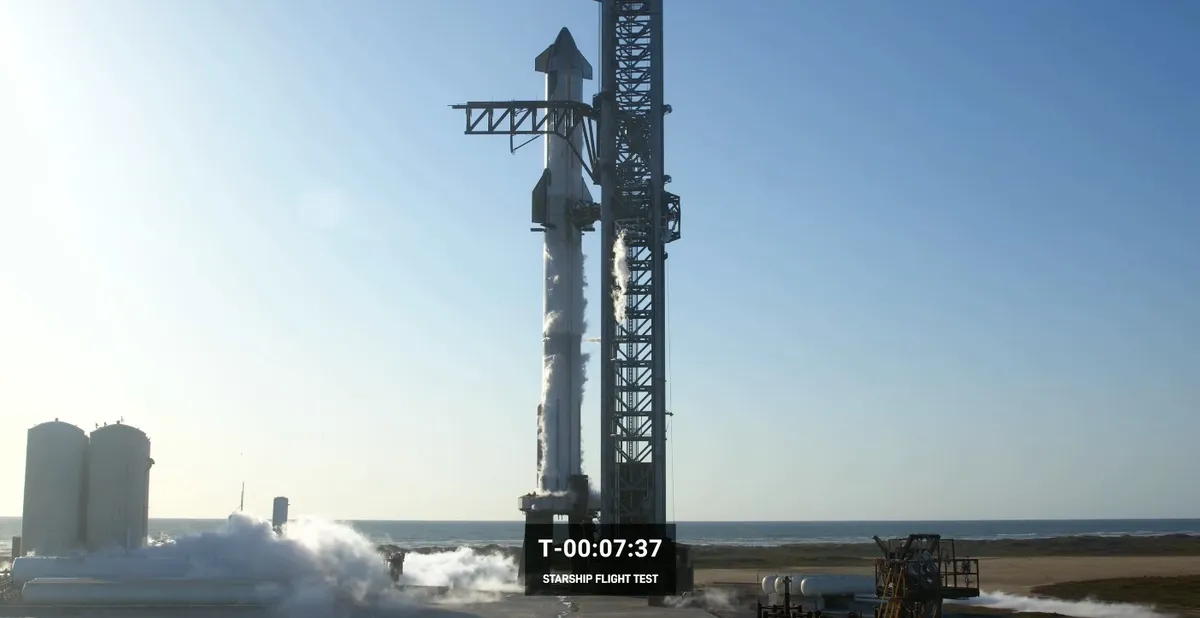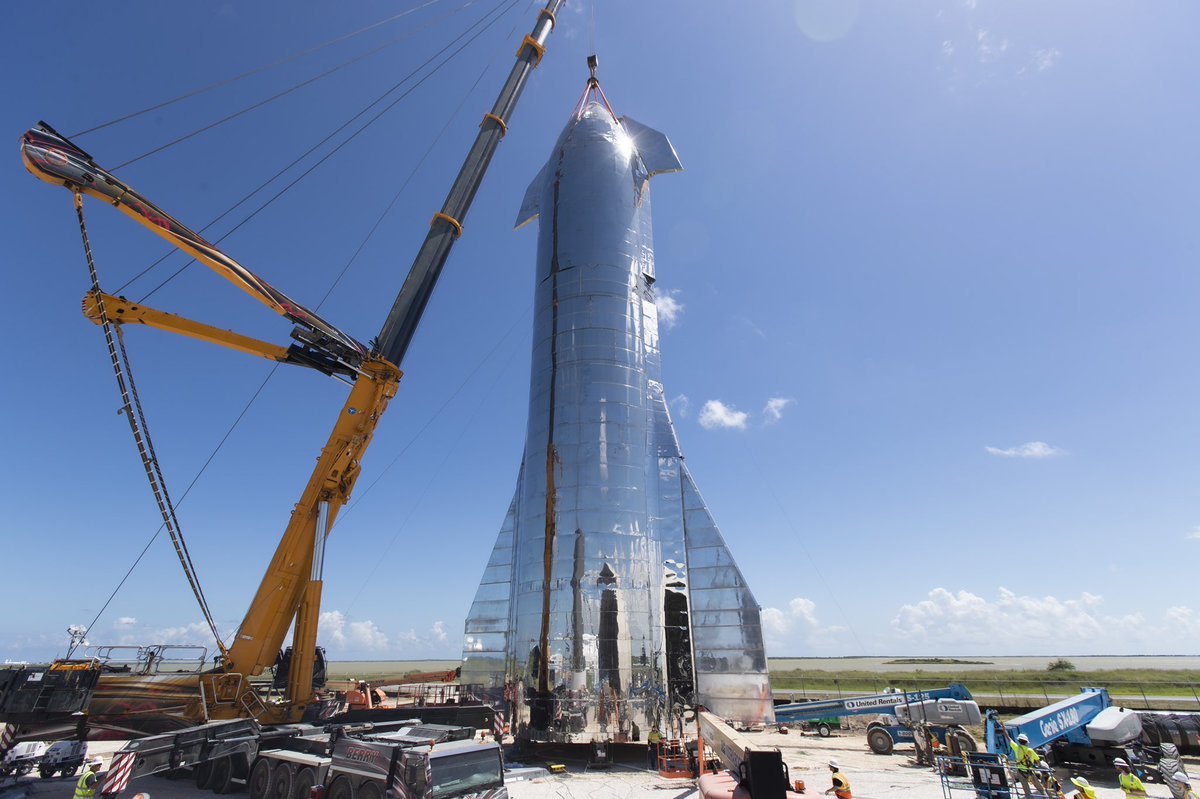SpaceX Starship Completes Third Test Flight, But Burns Up On Reentry

Elon Musk hails mostly successful test flight, saying Starship will make life ‘multiplanetary’ and will take humanity to Mars
Elon Musk’s SpaceX on Thursday mostly successfully conducted a third test flight of Starship, the largest rocket ever built.
SpaceX announced the test flight of the rocket on its third try, after it completed nearly an entire test flight through space, but disintegrated on its return to Earth. Starship is designed to eventually send astronauts to the moon and beyond,
The critical test of SpaceX’s long-range space vehicle in March had been hinted at by Elon Musk last month.

Test flight
Besides taking humanity to other planets, SpaceX also wants to use Starship for tasks such as launching its larger next-generation Starlink 2.0 communications satellites into orbit.
The fully reusable vehicle is based on a giant first stage called Super Heavy which is intended to push the 165-foot-tall Starship spacecraft into orbit.

Starship’s most recent launch came in May 2021 in which a three-engine upper-stage prototype called SN15 launched 6.2 miles above the Texas facility before descending to carry out a vertical landing.
NASA last November launched its own massive Artemis rocket in an unmanned mission taking an unmanned Orion capsule to the Moon after which it returned successfully to Earth.
On 14 March 2024, Starship successfully lifted off at 8:25am CT from Starbase in Texas. The test flight was mostly successful, and SpaceX said the flight “will provide invaluable data to continue rapidly developing Starship.”
A video of the test flight can be found here and here.
SpaceX pointed out a number of major milestones and firsts that had been achieved on the hour-long test flight. These included:
- For the second time, all 33 Raptor engines on the Super Heavy Booster started up successfully and completed a full-duration burn during ascent.
- Starship executed its second successful hot-stage separation, powering down all but three of Super Heavy’s Raptor engines and successfully igniting the six second stage Raptor engines before separating the vehicles.
- Following separation, the Super Heavy booster successfully completed its flip manoeuvrer and completed a full boostback burn to send it towards its splashdown point in the Gulf of Mexico.
- Super Heavy also successfully lit several engines for its first ever landing burn before the vehicle experienced a RUD (SpaceX-speak for “rapid unscheduled disassembly”).
- Starship’s six second stage Raptor engines all started successfully and powered the vehicle to its expected orbit, becoming the first Starship to complete its full-duration ascent burn.
- While coasting, Starship accomplished several of the flight test’s additional objectives, including the opening and closing of its payload door, and initiating a propellant transfer demonstration.
- Starship went on to experience its first ever entry from space, providing valuable data on heating and vehicle control during hypersonic reentry. Live views of entry were made possible by Starlink terminals operating on Starship.
- The flight test’s conclusion came during entry, with the last telemetry signals received via Starlink from Starship at approximately 49 minutes into the mission.
However Starship was expected to splash down in the Indian Ocean at the conclusion of the flight, but burnt up during re-entry to the planet.
SpaceX routinely frames these types of failures as normal, as test flights such as this allows engineers to gather crucial data to make improvements and adjustments to Starship for future missions.
Reaction
Elon Musk took to X (formerly Twitter) congratulate the SpaceX team, and to tweet about the Starship test flight, pointing out that at 5,000 tons, Starship is the largest flying object ever made.
Musk added that “Starship will make life multiplanetary” and “will take humanity to Mars.”
Starship will take humanity to Mars pic.twitter.com/BMBNI2mMKF
— Elon Musk (@elonmusk) March 14, 2024
“Congrats to SpaceX on a successful test flight! Starship has soared into the heavens. Together, we are making great strides through Artemis to return humanity to the Moon – then look onward to Mars,” tweeted NASA Administrator Bill Nelson.
Congrats to @SpaceX on a successful test flight! Starship has soared into the heavens. Together, we are making great strides through Artemis to return humanity to the Moon—then look onward to Mars. https://t.co/VXq8Vp1sAc
— Bill Nelson (@SenBillNelson) March 14, 2024